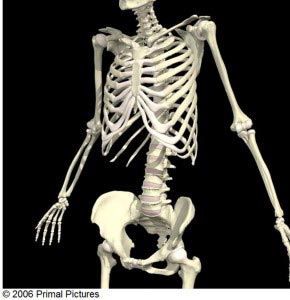Golfers Shoulder Pain - Role Reversal
Swing Faults and Injuries-there is a relationship between swing faults and injuries, and poor biomechanics and swing faults. In this lesson we are going to look at how several common swing faults are related to injuries. We will also look at how abnormal biomechanics can create swing faults that create pain.
“Flying elbow” is both a swing fault that results from a shoulder disorder and a swing fault that can cause a shoulder or low back disorder. Here is how it works. Let’s say, for the sake of arguments, that you are a 50-year-old man with poor thoracic mobility. Your thoracic spine is excessively flexed and somewhat rigid because you sit at a desk all day long. As a result, there is tightness in the chest muscles. Because of a lack of mobility in the spine, spine rotation is also limited. Once these problems exist, the scapular mobility increases, “trying” to make up for the lack of motion in the chest and spine. This causes the muscles of the shoulder to act as stabilizers. This role reversal leads to limited shoulder joint motion. Of particular interest to golfers is the rotational component. When shoulder joint rotation is limited, it shows up as “flying elbows” or reverse spine angles. This could be a problem. There may or may not be pain at this point, but the bottom line is that you have a shoulder dysfunction that will affect your swing and lead to pain.

Now golfer, you go out a few days a week for practice and you play a few days a week. When you do this you have a “flying elbow” because of the shoulder dysfunction. At the top of your swing you impinge the humerus against the acromion with each swing…that is what the “flying elbow” does mechanically…and you end up with an inflamed shoulder. Initially some ice and ibuprofen seem to make it feel better after you play or practice. Eventually though, that does not work. You have created micro-trauma to the rotator cuff with each swing. This is all because you have a rigid spine and role reversal in the shoulder complex. But wait, it gets worse. Now because of the discomfort in your shoulder your swing gets shorter, and in response to that you begin to tilt your torso to the left at the top. When that happens it lessens the shoulder impingement. Over time the reverse spine angle leads to more swing and ball flight issues, and your lower back begins to hurt. This is a real problem. Golfers experience it all the time…they do not know that the cause is the “flying elbow,” which is caused by poor thoracic and shoulder girdle mechanics…ROLE REVERSAL.
Are you beginning to see a trend? All of these swing problems are related to one another, and all of these swing problems are related to poor biomechanics of the shoulder complex. Do you want to fix the hook or the slice? Do you want to hit the ball long and straight, consistently? Do you want to play golf without injuries to the lower back? The key to accomplishing this is to get rid of the swing faults. The way to get rid of swing faults is to correct the biomechanics of the thoracic spine and shoulder complex. Weightlifting, machines, and the like will only worsen the problem until you fix the mechanical issues. Proper training by a qualified professional fixes these problems.
If you try these exercises and you find them to be too challenging or uncomfortable, do not continue, until you have consulted with your physician. All exercises for golf should be customized to your needs after a proper evaluation.
Come In and See Us
Want to take your golf to the next level? Our FitGolf® Trainers are experts at working one-on-one with you to tailor a training program to meet the specific needs of your body and help you achieve the results you are hoping to see in your golf.
Want More Resources?
Looking for more exercise resources, blog posts or monthly golf-specific exercise content sent straight to your inbox?

